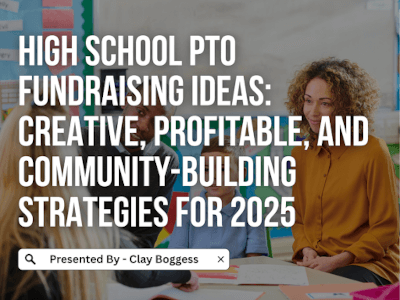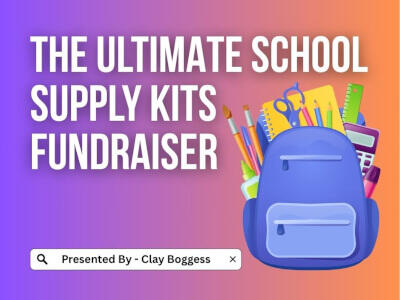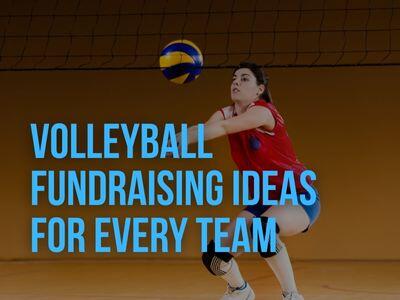
Use the following strategies and exceed your sales expectations.
How much do you expect your students to sell? If you think they can't exceed your high school fundraising goal, think again. If you really want them to succeed, you'll have to think outside the box. You should strongly consider implementing three things before your next fundraiser.
First of all, improve your prize program. Even if your catalog fundraiser company offers one, it's most likely designed for elementary school students. Why? That's where most of the money in the industry is. And that's a problem for a high school sponsor. Nothing will make an older student devalue your fundraiser quicker than a prize program with many cheap prizes.
However, even if you have an age-appropriate prize program, you still need more than just the basic prize program provided by the company. In other words, plan to offer additional fundraiser incentives to motivate students to make more sales during your fundraiser, not just after the sale.
Second, set an individual student sales goal. Getting where you need to go isn't accessible if you don't know the objective. Setting a fair-share goal you'll want everyone to reach will be necessary. In other words, you'll need to establish a number that each student needs to reach.
And third, set an "over-achiever" goal above everyone's fair-share goal. Set a goal for those who are competitive and willing to make an extra effort to qualify for your top seller drawing. An excellent round number, maybe 25 items, for example. Here are some practical ideas that can make your next high school fundraiser a big success:
1. Select an Appropriate Fundraiser Incentive
Choose an additional incentive that high school students will find fun and exciting. This is the hard part. You have to understand what motivates your students. What follows are some suggestions:
- Students who sell 'x' items get to throw a pie (or a water balloon) in __________'s face (find an adult that students will be motivated to sell for, like the head football coach or the assistant principal).
- If the whole group sells 'x' items, everyone wins free pizza or ___________________.
- Every student who sells 'x' items gets their yearbook for free.
- Students who sell 'x' items get a free ticket to the next school dance or ____________________.
- Find an adult on campus willing to participate in The Mystery Person Game.
- Incorporate The Money Game into your fundraiser.
- Use prize coupons and incorporate them into daily drawings.
2. Plan the Execution of Your Additional Incentive
It would be wrong to think you won't need to consider how your additional incentive will be implemented. This is where poor planning can have negative consequences and cancel out the effects of a great high school fundraiser incentive. Whatever additional prizes you decide to use, make sure to:
- Do the calculations:
- Spend the time to think through your numbers in advance. For example, if you know that the yearbook retails for $75.00, you won't want to give one away to every student who sells ten items. Most students would probably sell ten items for this incentive, but you'll lose money.
- Here are some valid numbers you'll want to use:
- $5.00 profit for every item sold
- Item profit x student goal. For example, to qualify for the yearbook, students need to sell at least 25 items (25 items x $5.00 profit/item = $125.00 gross profit - $75.00 yearbook cost = $50.00 net profit)
- (Keep in mind that the idea behind giving away something like a yearbook is that most probably won't reach the goal, but they'll still sell more than they ordinarily would have without the incentive. This will add money to your bottom line.)
- Promote, promote, and promote some more:
- What good is a great incentive when no one remembers it? Ensure a good return on your investment by promoting it. Why would you spend extra time or money on something and not make sure your sellers were working towards it?
- Remind your sellers as often as possible about how it will benefit them.
Exceeding your high school fundraising goal means a few students may reach the higher goal. Even if others don't sell that much, they'll sell more than ordinarily.
Author Bio
Clay Boggess has been designing fundraising programs for schools and various nonprofit organizations throughout the US since 1999. He’s helped administrators, teachers, and outside support entities such as PTAs and PTOs raise millions of dollars. Clay is an owner and partner at Big Fundraising Ideas.



